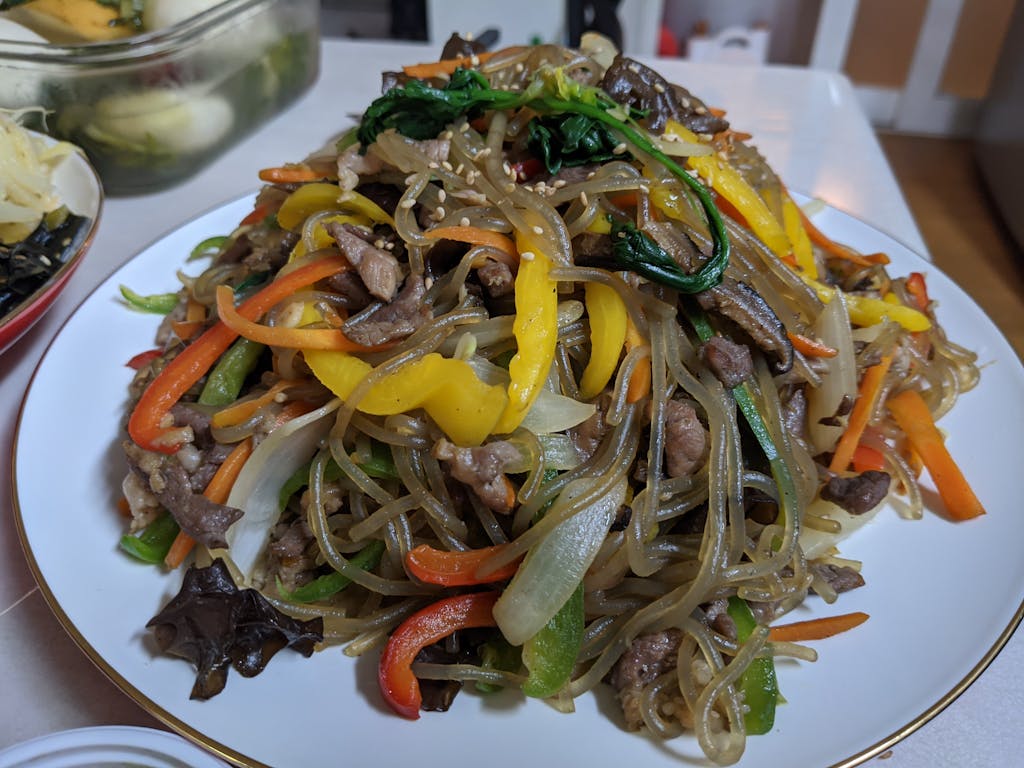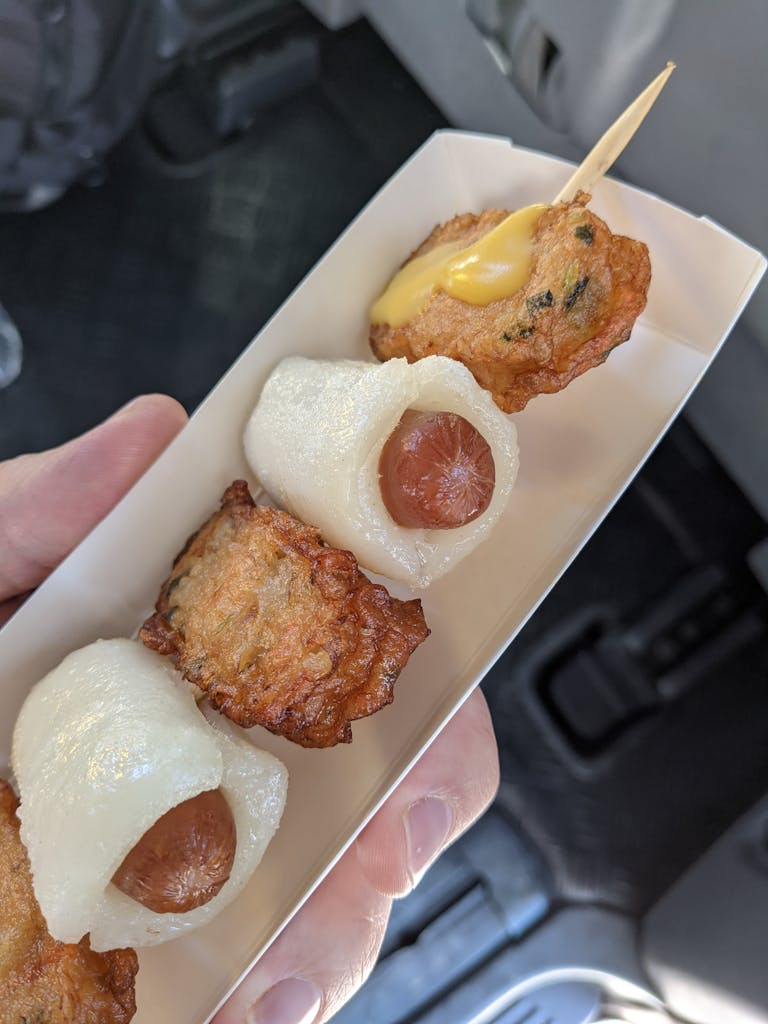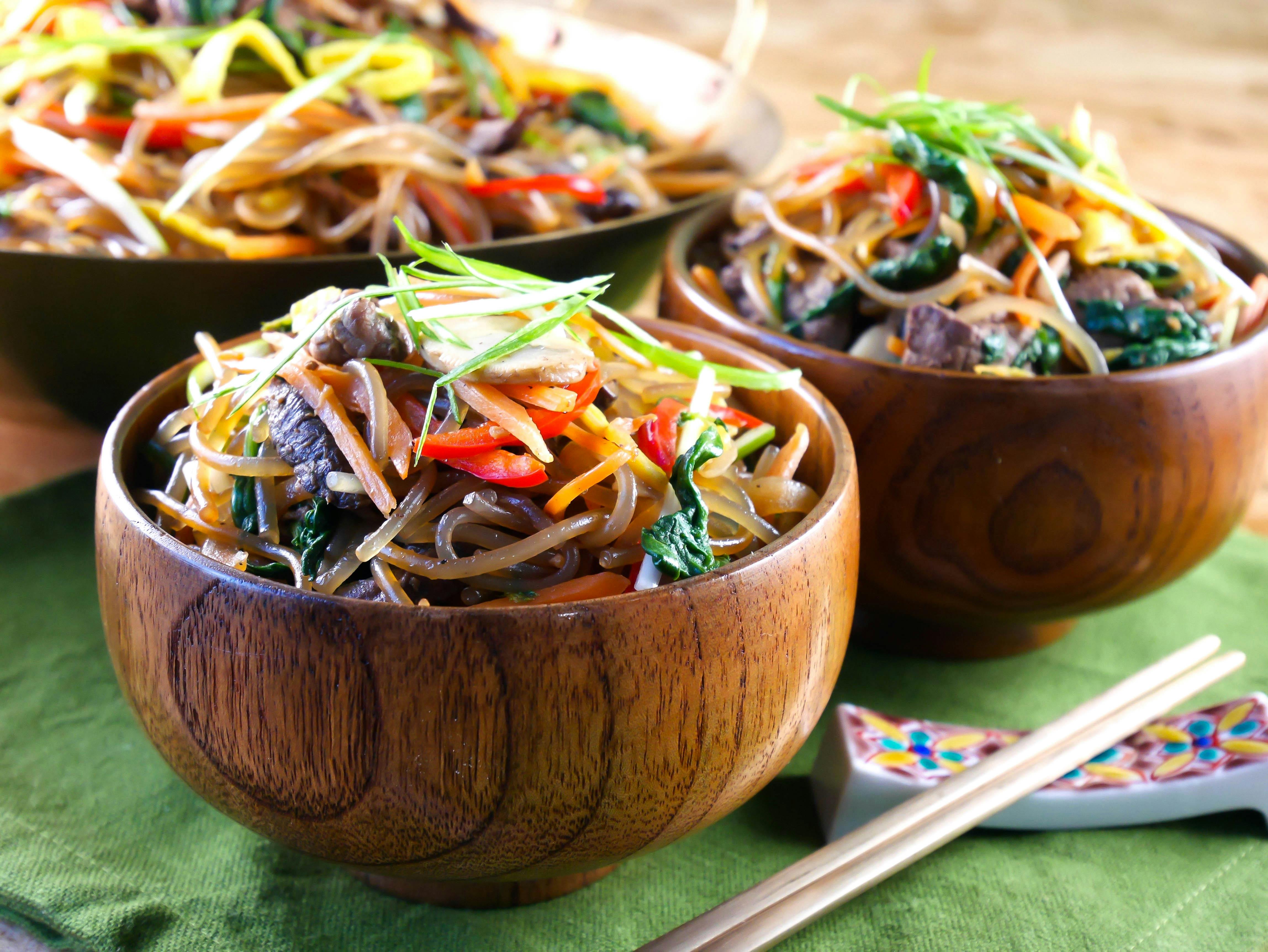The Wide World of Korean Cuisine
As a young man in the army, Korean native Jung Sik Yim found himself stationed on a remote military outpost on Korea’s rocky sea coast. “It rained a lot and nobody knew how to cook,” said Jung Sik, who suddenly found himself in charge of feeding his 15 fellow soldiers. “I called my mom, and she sent me some recipes,” he explained, telling me that he first learned to make gochujang — a delicious (yet spicy) red pepper paste and an essential condiment in many dishes in Korean cuisine. He also began to catch fresh fish and experiment on his fellow soldiers, who liked his cooking enough to make him the camp chef. Jung Sik laughed as he remembered his early efforts, “We were young and hungry, and we had a good time.”
Today, Jung Sik Yim is at the helm of his own Michelin-star restaurant, JungSik, with locations in New York and Seoul and a reputation for modern Korean food. And more than 20 years after feeding his fellow soldiers, Chef Jung Sik Yim is guiding me through a parade of fantastic dishes at his restaurant in Korea, located in Seoul’s fashionable Gangnam district. First came a plate of translucent beef carpaccio, dressed with salty sea urchin eggs and finely-dried seaweed, then sprinkled with crushed nuts and a splash of rich sesame oil — then a creamy foie gras tarte with Asian pear jam, drizzled in yuzu sauce and a nose-tickling dust of cinnamon.
My cuisine is different than what most Koreans expect,” Jung Sik said to me. Having spent years in Spain and then setting up a sister restaurant in New York City, he returned to Seoul with an appreciation for new techniques and ingredients. “I’m always learning!”— and it seems like he’s still having fun. When his signature dessert arrived, I hesitated briefly before biting into the life-like baby banana fashioned from Valhrona white chocolate and dulce de leche ganache, filled with fresh banana purée and served with coffee ice cream.
The Koreans’ near-obsession with miniature versions of classic French pâtisserie stems from their appreciation of mastering any skill (in this case, culinary) and then taking it to the next level (the lemon curd brioche at Signiel Seoul may be the best breakfast bun I’ve ever tasted). As Jung Sik showed me, in the Korean kitchen, mastery comes from a place of humility, patience, and lifelong dedication.
What is Korean food?
Delicate haute cuisine is not the first idea people have about Korean staples. Some foreigners lump Korean cuisine in with Chinese or Japanese dishes. Others assumes it’s slimy soups and seaweed and weird-smelling cabbage. And then some of us have had a scarfed down “Korean tacos” from a food truck and think it’s pretty good, yet wonder, aren’t tacos Mexican?
The fact is, like Korean culture, Korean cuisine is both ancient and modern. Dishes might include seasoned grilled meat as well as light vegetarian fare. Nowadays, Korean food culture runs the gamut, including fresh sashimi yanked out of the ocean, Michelin-starred gourmet fare, tasty street food and home cooking. What the Korean food culture has in common is that almost everyone focuses on healthy living and striving for balance.

And that’s where harmony comes in
Harmony is a spiritual aspect that touches every plate in Korea. Despite its exploding popularity around the world, Korean food represents one of the oldest culinary traditions in Asia. It represents innovation, survival and harmony with nature and its season. It represents centuries of hardworking people who forage, catch, hunt, fish, plant, grow, harvest, dry and ferment food in preparation for long winters or lean times. As a common banchan (or side dish), kimchi appears at most sit-down meals. The crunchy pickled cabbage smothered in red-hot chili is packed with flavor, and loaded with probiotic benefits that aid in digestion.
Japchae may be my favorite Korean dish of all — a warm pile of clear glass noodles (made from sweet potatoes), mixed with tender meat or seafood, along with sautéed mushrooms and grilled vegetables. Each ingredient is cooked separately to enhance its unique flavor, color, and texture — then tossed together with a savory dressing of citrus, soy sauce, sesame oil and chili. Like most great Korean dishes, japchae is all about the ensemble and the balance achieved with each bite.

Seasonal, subtle and fresh
While fermented foods are a huge staple of the Korean diet, fresh food is equally important. “Korean markets tell me what’s in season,” explained Chef Cho Hee Sook, who shops almost exclusively in the traditional street markets that are always filled with fresh ingredients from the field, forest, mountain and ocean. Fresh and seasonal ingredients like fragrant greens, sun-ripened fruit or savory root vegetables, inform each menu she creates. “They reflect Korea’s rich and diverse geography,” she tells me, proud of her simple home-cooked approach. “I want my food to comfort people,” and after slurping a warm clay pot of her velvety chestnut porridge, followed by dainty braised cabbage rolls in hot broth — I felt comforted.
Called the “godmother of Korean cuisine,” Cho Hee Sook began her career as a high school teacher of home economics. A second job in a hotel kitchen showed her the growing disconnect between everyday tourist fare and Korea’s strong culinary tradition based in fishing, agriculture and the fresh markets. Today, she serves refined versions of old Korean classics from the countryside in her somewhat-understated restaurant Hansikgonggan (“home cooking place”) — one of 32 restaurants in Seoul with a Michelin star rating. And yet despite global recognition, Cho Hee Sook stays firm in her roots. “I wish people understood how Korean food can be subtle. It’s not all bibimbap and spicy barbecue and fried chicken. We have incredible variety.”
Variety, subtlety and spice means that a Korean menu is as big as the world Koreans inhabit — which nowadays — is the entire world. With the global spread of Korean business, culture and people, comes the spread (and fusion) of Korean cuisine. Bulgogi (“fire meat”) is now globally recognized as some of the tastiest barbecue around, but for me, it tasted even better in Korea, where I used chopsticks to lift each tender seasoned morsel off the sizzling table grill. I also loved the soft and floral rice served in a dolsot — a carved stone pot that keeps food piping hot. Cooking Korean food at the table is common for shared meals — in homes, restaurants as well as the street!

Korean food, street-style
Few countries offer the range and quality of street food I encountered in Korea. I loved the stuffed pancakes, the delicate doughnuts and the spicy rice cakes. I loved exploring new flavors of soft-serve ice cream (like cantaloupe, honeydew and even corn), and I loved simply following my nose around some unknown neighborhood and tasting something new and adventurous.
Where you go determines what you find, as every city has its own local fare. In Daegu, for instance — a city that’s famous for its annual festival of fried chicken and beer — there’s a whole street full of places that serve barbecued chicken gizzards (which are fantastic). And in Korea’s large coastal city of Busan — I developed a habit of eating odeng — a signature savory fish cake, made with potatoes, onions and fresh herbs. Served on a plate or a stick, odeng is the ultimate seaside comfort food with such a delicious aroma. I normally went back for seconds.
Most revealing culinary moment? At the Buddhist Monastery
As I ate my way around the Korean peninsula, I found the food to be far healthier than what I typically eat at home. During my stay at a Buddhist temple, I ate entirely vegan dishes that were stacked with flavor and variety, and these inspired me to cook differently when I returned home. Nowadays, I keep kimchi and gochujang in my fridge, and I’m working my way through a Korean cookbook. Just like Chef Jung Sik Yim, I’m still learning — and I’m having fun along the way.
Explore Korean foods and other culinary destinations. Learn more here.
Silversea Cruises’ story on Korea’s storytelling tradition of pansori was created as part of a content partnership with the Korea Tourism Organization, NY.

